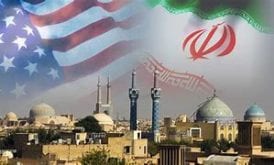Radiofarda – Government controlled Syrian newspaper Al-Watan has disclosed in an April 17 article that the serious shortage of fuel Syria is facing is the outcome of Iran halting a credit line to Syria since October 15, 2018 under pressure from U.S. sanctions.
Al-Watan also added in this “unprecedented disclosure” that no oil tanker has reached Syrian ports during the past six months.Previously, other reports has mentioned Egypt being responsible for not allowing Iranian tankers to pass through the Suez Canal to reach Syria.
Referring to long lines of cars outside Syrian gas stations during the past week, Al-Watan pointed out that Syria needs 4.5 million litters (1.2 million gallons) of gasoline and 6 million litters (1.6 million gallons) of diesel every day and the government needs an estimated 8 million dollars every daily to provide fuel.
It is not clear what “credit line” from Iran exactly means. If Iran was providing such an amount of oil for free, it would mean that Tehran spent much more money in Syria in the past several years than it has ever admitted.SEE ALSO:
Iran Reportedly Shipping Oil To Syria Overland As Suez Not Accessible
Meanwhile, oil output in the government-controlled parts of Syria is currently 24,000 barrels while the country needs 136,000 barrels of oil per day, Al-Watan reported. This is 20 percent of Syria’s need for fuel.
The newspaper quoted the Syrian Oil Ministry as having said that Syria relied mainly on the Iranian credit line to supply fuel, but the line has been halted for six months now.
As a result, Syria needs huge amounts of liquidity to make up for the suspension of the Iranian credit line, wrote Al-Watan.
There has been no comment from Iran about Syria’s fuel situation. Bashar al-Assad recently visited Tehran and met with Supreme Leader Ali Khamenei, but no one mentioned oil as a subject of bilateral talks during the visit.
Al-Watan’s article is published just one day after Iran’s foreign minister Javad Zarif visited Damascus, which could mean Syrian attempts to somehow get Iran’s help have remained futile.
According to Al-Watan securing $200 million every month has been a big challenge for Damascus.SEE ALSO:
Firebrand Cleric Says ‘Sedition 2019’ Threatens Khamenei
The report adds that as a result of the suspension of Iranian credit lines and logistic problems at Syrian ports, the supply of diesel lags behind 90 days, while the delay in supplying gasoline has reached 108 days. Meanwhile natural gas has not been supplied to Syria for 45 days now causing huge shortages and making it impossible for Damascus to cope as reserves are declining quickly.
Earlier reports from Syria and Iran blamed problems at the Suez Canal for delay in shipments.
The Al-Watan report makes it clear now that the U.S. sanctions against Iran, as well as its warning of significant U.S. sanction risk for parties involved in the shipment of petroleum products to Syria, and the crackdown on “deceptive imports” to Syria have created the worst-case scenario for the Syrian Oil Ministry.
The contracts the Assad government concluded with private sector suppliers in early 2019 are part of the initiative for “deceptive imports” mentioned by the Al-Watan report.
As a solution, Syrian officials have thought of importing oil via Jordan and Iraq overland, but none was possible because of U.S. influence and the complications involved in working with Iraq. Al-Watan observed that even if the complication is resolved 100 tankers of oil coming to Syria from Iraq on the roads would be “insufficient to meet Syria’s needs for half a day,” and it takes tanker trucks two days to reach Syria’s borders.SEE ALSO:
Iran Oil Minister Denies Diverting Floods To Save Oil Wells
Earlier, Al- Iraqia news agency had reported that Iranian oil tanker trucks are passing through Iraq, and their number will be increased in coming days.
“1200 Iranian tankers loaded with oil products reached Syria through Iraq in the past week,” Al- Iraqia reported, adding, “The number of Iranian oil tankers are expected to reach 1500 per week, and after providing current Syrian needs, they will be fixed at 500 tankers per week.”
Now, the al-Watan indirectly refutes this report.
Most of Syria’s oil fields are outside areas the government controls, so austerity measures may be the last resort.
According to Al-Watan, Syria will have to try to restore the credit line from Iran, and work on other ways of securing financial liquidity among other things. However, U.S. sanctions are the biggest hindrance.
Iran and Russia have been helping Assad’s regime to survive during the past eight years. In the meantime, Iran has spent billions of dollars on the Syrian civil war while also being engaged in other proxy wars in Iraq and Yemen, draining its financial resources.
At the same time, U.S. sanctions have hit the Iranian economy and its oil exports hard. It appears that Iran is beginning to jettison its burdens such as Syria, while its own existence is threatened by sanctions, floods, economic crisis, mismanagement, corruption and public dissent.
 Shabtabnews In this dark night, I have lost my way – Arise from a corner, oh you the star of guidance.
Shabtabnews In this dark night, I have lost my way – Arise from a corner, oh you the star of guidance.


